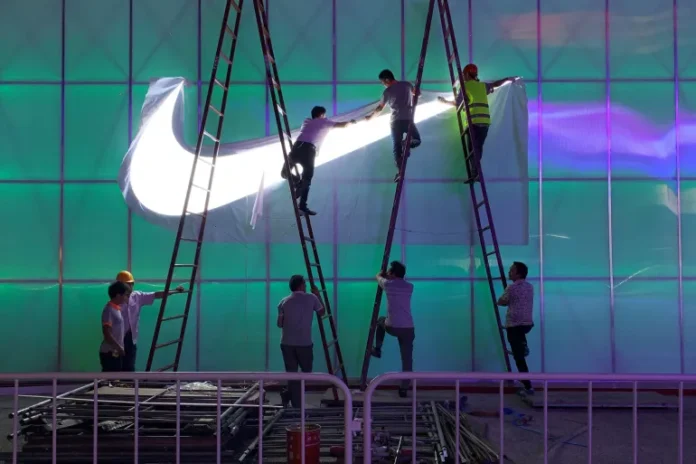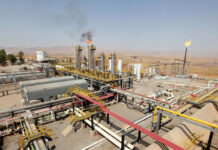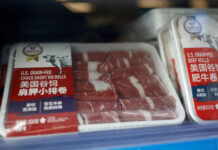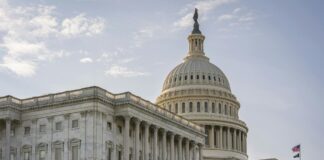The world’s two largest economies are once again on a collision course, as President Donald Trump’s aggressive tariff campaign against China triggers fresh anxieties across key sectors of the American economy.
While select tech giants like Apple and Nvidia have been granted temporary reprieve from the latest round of duties, a wide swathe of US industries—ranging from textiles to agriculture—are bracing for a prolonged period of instability.
On Wednesday, the Trump administration unveiled a sweeping 145 percent tariff hike on Chinese imports—part of what the president calls his “reciprocal” trade strategy aimed at countering Beijing’s trade surplus and leveling the global playing field.
While a 90-day pause was offered to most other trading partners, China was singled out for the sharpest increases, sparking swift retaliation from Beijing. China’s Ministry of Commerce responded on Friday by raising its own tariffs on US goods from 84 percent to 125 percent, warning it would “fight to the end.”
The escalation has roiled markets and left corporate America scrambling. Despite the tough rhetoric, the Trump administration simultaneously moved to issue temporary exemptions for a handful of high-tech goods, including smartphones, semiconductors, and solar panels—an apparent nod to the integral role China plays in global supply chains.
Yet the exemptions come with caveats. These products remain subject to a prior 20 percent tariff, and the president has warned that additional levies may be introduced following a national security review of imported semiconductor equipment.
“Supply chains don’t move overnight,” said Bradley Saunders, a North America analyst at Capital Economics. “Electronics assembly processes, in particular, have been optimized over decades. Disrupting that now will cause widespread dislocation.”
Indeed, while Apple and Nvidia saw a stock rebound following the exemption news, underlying concerns remain.
Apple continues to rely on Chinese factories for assembly, and nearly 90 percent of all gaming consoles sold in the US—including those from Microsoft, Sony and Nintendo—originate from Chinese production lines. Nvidia’s chip supply chain also runs through Taiwan and mainland China, further underlining the sector’s exposure.
For other industries, the fallout is more immediate and severe. Apparel and footwear manufacturers, already contending with razor-thin margins, face stark choices.
With 95 percent of Nike’s shoes manufactured in Asia—most of them in China, Vietnam and Indonesia—tariffs as high as 145 percent threaten to push up consumer prices and erode profits.
Vietnam, a key partner in many US clothing supply chains, currently faces a 10 percent tariff, which could rise in July absent a bilateral deal with Washington.
Retailers like Gap and Levi’s, both heavily reliant on Vietnamese production, have seen share prices drop by double digits since the tariff announcement.
Meanwhile, US farmers find themselves caught in the crossfire. In 2024, China accounted for roughly 15 percent of total US farm exports, with soya beans leading the charge.
The American Soybean Association has come out strongly against the tariffs, warning that the industry—already battered during Trump’s first trade war—cannot sustain another round of Chinese retaliation.
“If this continues, many soya bean producers will simply go under,” said a spokesperson for the association. The sector supports more than 223,000 full-time jobs and contributes $124bn to the US economy—more than the entire GDP of countries like Kenya or Bulgaria.
Other major agricultural exporters, including corn and pig farmers, are similarly on edge. Food giants like Cargill, Tyson Foods, and Archer Daniels Midland are expected to lose significant earnings from their Chinese export business.
According to the Yale Budget Lab, the economic toll of the tariffs could cost up to 740,000 jobs across the US by the end of 2025.
The prospect of higher inflation and reduced business output adds further pressure on the Federal Reserve as it attempts to stabilize an already fragile post-pandemic recovery.
Despite mounting criticism, President Trump has remained defiant. “We’re bringing jobs back to America,” he said at a rally last week. But for many US companies, especially those deeply integrated with the global economy, the cost of that revival may be steep—and rising.













